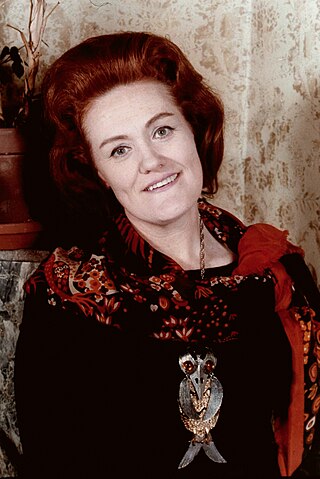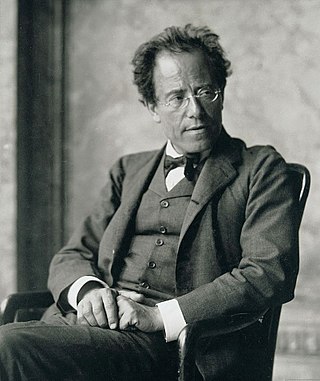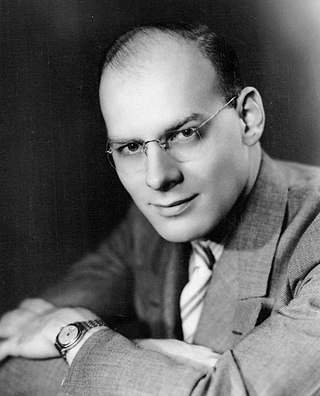
American Chinese cuisine is a cuisine derived from Chinese cuisine that was developed by Chinese Americans. The dishes served in many North American Chinese restaurants are adapted to American tastes and often differ significantly from those found in China.

Francis Albert Sinatra was an American singer and actor. Nicknamed the "Chairman of the Board" and later called "Ol' Blue Eyes", he is regarded as one of the most popular entertainers of the mid-20th century. Sinatra is among the world's best-selling music artists with an estimated 150 million record sales.

New England cuisine is an American cuisine which originated in the New England region of the United States, and traces its roots to traditional English cuisine and Native American cuisine of the Abenaki, Narragansett, Niantic, Wabanaki, Wampanoag, and other native peoples. It also includes influences from Irish, French, Italian, and Portuguese cuisine, among others. It is characterized by extensive use of potatoes, beans, dairy products and seafood, resulting from its historical reliance on its seaports and fishing industry. Corn, the major crop historically grown by Native American tribes in New England, continues to be grown in all New England states, primarily as sweet corn although flint corn is grown as well. It is traditionally used in hasty puddings, cornbreads and corn chowders.
Nu metal is a subgenre of alternative metal that combines elements of heavy metal music with elements of other music genres such as hip hop, alternative rock, funk, industrial, and grunge. Nu metal rarely features guitar solos or other displays of musical technique; the genre is heavily syncopated and based on guitar riffs. Many nu metal guitarists use seven-string guitars that are down-tuned to produce a heavier sound. DJs are occasionally featured in nu metal to provide instrumentation such as sampling, turntable scratching and electronic background music. Vocal styles in nu metal include singing, rapping, screaming and growling. Nu metal is one of the key genres of the new wave of American heavy metal.

Louis Leo Prima was an American trumpeter, singer, entertainer, and bandleader. While rooted in New Orleans jazz, swing music, and jump blues, Prima touched on various genres throughout his career: he formed a seven-piece New Orleans-style jazz band in the late 1920s, fronted a swing combo in the 1930s and a big band group in the 1940s, helped to popularize jump blues in the late 1940s and early to mid 1950s, and performed frequently as a Vegas lounge act beginning in the 1950s.

Walter Maynard Ferguson CM was a Canadian jazz trumpeter and bandleader. He came to prominence in Stan Kenton's orchestra before forming his own big band in 1957. He was noted for his bands, which often served as stepping stones for up-and-coming talent, his versatility on several instruments, and his ability to play in a high register.

Anthony Dominick Benedetto, known professionally as Tony Bennett, was an American jazz and traditional pop singer. He received many accolades, including 20 Grammy Awards, a Lifetime Achievement Award, and two Primetime Emmy Awards. Bennett was named an NEA Jazz Master and a Kennedy Center Honoree and founded the Frank Sinatra School of the Arts in Astoria, Queens, New York. He sold more than 50 million records worldwide and earned a star on the Hollywood Walk of Fame.

OKeh Records is an American record label founded by the Otto Heinemann Phonograph Corporation, a phonograph supplier established in 1916, which branched out into phonograph records in 1918. The name was spelled "OkeH" from the initials of Otto K. E. Heinemann but later changed to "OKeh". Since 1965, OKeh was a subsidiary of Epic Records, a subsidiary of Sony Music. Today, OKeh is a jazz imprint, distributed by Sony Masterworks.

Dame Joan Alston Sutherland, was an Australian dramatic coloratura soprano known for her contribution to the renaissance of the bel canto repertoire from the late 1950s to the 1980s.

Frankie Laine was an American singer and songwriter whose career spanned nearly 75 years, from his first concerts in 1930 with a marathon dance company to his final performance of "That's My Desire" in 2005. Often billed as "America's Number One Song Stylist", his other nicknames include "Mr. Rhythm", "Old Leather Lungs", and "Mr. Steel Tonsils". His hits included "That's My Desire", "That Lucky Old Sun", "Mule Train", "Jezebel", "High Noon", "I Believe", "Hey Joe!", "The Kid's Last Fight", "Cool Water", "Rawhide", and "You Gave Me a Mountain".

Das Lied von der Erde is an orchestral song cycle for two voices and orchestra written by Gustav Mahler between 1908 and 1909. Described as a symphony when published, it comprises six songs for two singers who alternate movements. Mahler specified that the two singers should be a tenor and an alto, or else a tenor and a baritone if an alto is not available.

Mitchell William Miller was an American choral conductor, record producer, record-industry executive, and professional oboist. He was involved in almost all aspects of the industry, particularly as a conductor and artists and repertoire (A&R) man. Miller was one of the most influential people in American popular music during the 1950s and early 1960s, both as the head of A&R at Columbia Records and as a best-selling recording artist with an NBC television series, Sing Along with Mitch. A graduate of the Eastman School of Music of the University of Rochester in the early 1930s, Miller began his musical career as a player of the oboe and English horn, making numerous highly regarded classical and popular recordings.

Wonga Philip Harris was an American actor, comedian, singer and songwriter. He was an orchestra leader and a pioneer in radio situation comedy, first with The Jack Benny Program, then in The Phil Harris-Alice Faye Show in which he co-starred with his wife, singer-actress Alice Faye, for eight years. Harris is also noted for his voice acting in animated films. As a voice actor, he played Baloo in The Jungle Book (1967), Thomas O'Malley in The Aristocats (1970), Little John in Robin Hood (1973), and Patou in Rock-a-Doodle (1991). As a singer, he recorded a number one novelty hit record, "The Thing" (1950).

Ray McKinley was an American jazz drummer, singer, and bandleader. He played drums and later led the Major Glenn Miller Army Air Forces Orchestra in Europe. He also led the new Glenn Miller Orchestra in 1956.

Tatiana Troyanos was an American mezzo-soprano remembered as "one of the defining singers of her generation". Her voice, "a paradoxical voice — larger than life yet intensely human, brilliant yet warm, lyric yet dramatic" — "was the kind you recognize after one bar, and never forget", wrote Cori Ellison in Opera News.

The discography of American alternative rock band Pearl Jam, consists of 11 studio albums, 23 live albums, 3 compilation albums, 42 singles, and numerous official bootlegs.

Sam Butera was an American tenor saxophonist and singer best noted for his collaborations with Louis Prima and Keely Smith. Butera is frequently regarded as a crossover artist who performed with equal ease in both R&B and the post-big band pop style of jazz that permeated the early Vegas nightclub scene.

George Duvivier was an American jazz double-bassist.

Peter Washington is a jazz double bassist. He played with the Westchester Community Symphony at the age of 14. Later he played electric bass in rock bands. He attended the University of California, Berkeley, where he majored in English Literature, and performed with the San Francisco Youth Symphony and the UC Symphony Orchestra. His growing interest in jazz led him to play with John Handy, Bobby Hutcherson, Harold Land, Frank Morgan, Ernestine Anderson, Chris Connor and other Bay Area luminaries. In 1986 he joined Art Blakey and The Jazz Messengers and moved to New York City. Beginning in the 1990s, he toured with the Tommy Flanagan trio until Flanagan's death in 2001, and has played with the Bill Charlap trio since 1997. He was a founding member of the collective hard bop sextet One for All and is a visiting artist with the Chicago Symphony Orchestra.

Hot Fives & Sevens is a 2000 box set collection of recordings made by American jazz trumpeter and singer Louis Armstrong with his Hot Five, Hot Seven, and other groups between 1925 and 1930. First released on JSP Records on 22 August 2000, the set was subsequently reissued on Definitive in 2001. A four-disc compilation, the set has received a "crown" as an author's pick in The Penguin Guide to Jazz and is also included in the book's "core collection" recommended for jazz fans. Allmusic concurs that it is "beyond indispensable", suggesting that "you can't have a Louis Armstrong collection without this historic set" or "any kind of respectable jazz collection" Alternatively, Ben Ratliff, writing in 2002, preferred Columbia's release The Complete Hot Five and Hot Seven Recordings.



















